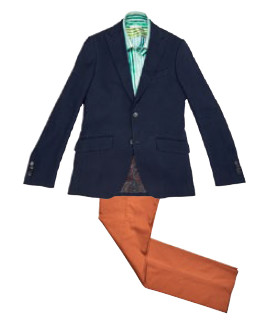In the business of building the perfect playground for his clients, Leon Tan approaches this with the same playful attitude he applies to his sense of style.


You would think that a business that deals with the installation of tactile-based play paraphernalia would be suffering this period, but Leon Tan shares otherwise. Having increased Kompan Asia’s topline sales year on year from 2017 to 2018 by 97 per cent, the business development director of the world’s leading manufacturer of playground equipment, reveals that the company is executing a couple of big projects in Japan, Korea and Hong Kong.
Founded in 1970 by Danish artist Tom Lindhardt, Kompan has become synonymous with playgrounds. Its colourful and striking apparatus are loved by children all over the world and its most famous invention – the Crazy Hen, a rocking chair-like contraption with a blue spring at the bottom supporting the bird apparatus – is still one of the company’s bestsellers even though it’s been around for 50 years.
The best part: Kompan offers lifetime warranties on its products. “Our material is so good that we use hammers to smash the items in our brand videos. This is important because, in other markets, the playgrounds are located in public neighbourhoods where there are a lot of vandalism and abuse,” shares Tan.
In many ways, his vibrant and playful personality is tailor-made for Kompan. So are his fashion sensibilities. The 40-yearold loves hues of all kinds, as evidenced by the ensemble he chose for the shoot. “I’ve always liked wearing blazers with different patterns and textures, and this Etro number has subtle detailing that is only visible when you take a closer look. I paired it with the striped green shirt because it complements the blue of the blazer, and then I finished it off with this rusty brown pair of pants. Gone are the days when bottoms should be just black and blue.”
For Tan, fashion is an outlet to express himself, and especially so in the corporate world. He started his career in a Japanese company during a conservative period. That meant a steady diet of bland shirts and boring ties. Suits were de rigueur for meetings, but they had to be in plain silhouettes and colours. Back then, this was a far cry from his usual wardrobe choices that comprise loud and colourful designs from luxury brands such as Versace, Dolce&Gabbana and MCM.
Of course, Tan is a chameleon and able to adapt to different situations, which explains his rapid rise in the corporate world. Before the pandemic, he shared that he could be in three different countries in a week for work and each city presented separate sartorial corporate norms.
For example, countries like Korea and Japan still expect business meetings to be conducted in formal wear – “although after Fukushima, the Japanese government has formally announced that business dressing can be done without a tie so companies can save on air-conditioning” – while cities such as Bangkok and Hong Kong have Tan rocking up in sneakers.
Of course, now that he’s working from home, Tan admits that he regularly wears just T-shirts and shorts on days when he doesn’t have presentations. “I know that there’s this idea that you should wear what you normally wear for work when you’re at home so you can be more productive, but I’m honestly so immersed in my work all the time that it doesn’t matter what I wear,” says Tan. “At the end of the day, style should be what you like and feel comfortable and confident in.”

SARTORIAL SELECTIONS
ART DIRECTION FAZLIE HASHIM























